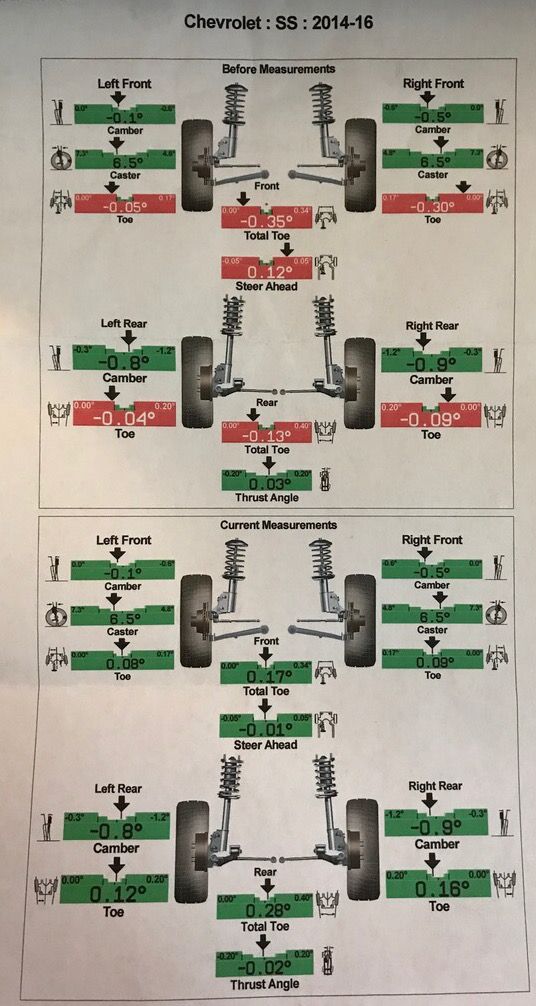Had an alignment performed today prior to the first Autox of the season on my 2016, discovered that the alignment from the factory is TERRIBLE... Even had positive camber up front.
Note: I only have 1700 miles on the car and havent had any road issues that would have caused the alignment to go out of spec.
I went with a mild performance alignment (-1.5 front camber, a little bit of toe in up front, -.5 rear camber with zero toe). If you are just daily driving yours, I would recommend -1 degrees up front with zero toe to reduce wear.
As mentioned in other threads, getting a good alignment with some additional front camber really improves the steering feel, so much so I was REALLY surprised how good it feels now. The minor slop in the wheel is gone even in touring mode, the car just feels smooth and turn in feels solid and progressive. Its not something you think you would make such an improvement until you experience it yourself.
Anyway, couple of quick pics:
![Image]()
![Image]()
Note: I only have 1700 miles on the car and havent had any road issues that would have caused the alignment to go out of spec.
I went with a mild performance alignment (-1.5 front camber, a little bit of toe in up front, -.5 rear camber with zero toe). If you are just daily driving yours, I would recommend -1 degrees up front with zero toe to reduce wear.
As mentioned in other threads, getting a good alignment with some additional front camber really improves the steering feel, so much so I was REALLY surprised how good it feels now. The minor slop in the wheel is gone even in touring mode, the car just feels smooth and turn in feels solid and progressive. Its not something you think you would make such an improvement until you experience it yourself.
Anyway, couple of quick pics:








